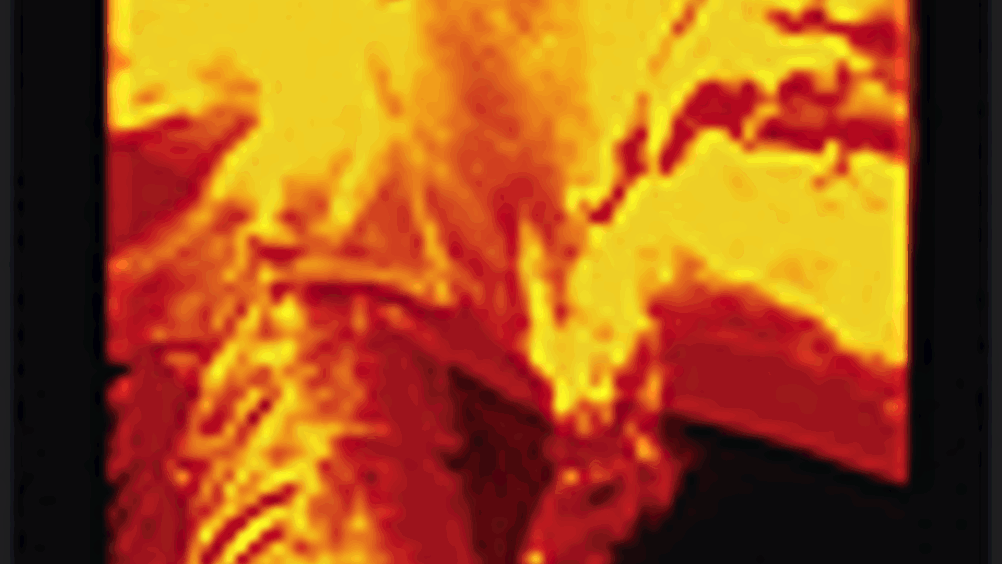Swallow drive

Work by UK researchers could greatly reduce the time it takes to diagnose a wide variety of swallowing disorders by using advanced algorithms and image processing.
Dysphagia is the medical term for abnormal swallowing, a condition that frequently occurs after a stroke or as a result of degenerative illnesses such as Parkinson's disease or multiple sclerosis. If left untreated, it can lead to pneumonia and malnutrition.
To diagnose dysphagia, the most common technique is the modified barium swallow (MBS), during which a small amount of barium is mixed into food or drink and the patient's swallowing movements are analysed using an X-ray video camera.
Gold standard
This technique is known as video-fluoroscopic (VF) evaluation and is the current gold standard for diagnosing suspected dysphagia in patients. But although this is the most effective diagnosis tool available, it has a number of drawbacks.
A small research team led by Dr John Goulermas from Liverpool University's school of electrical engineering and electronics is about to embark on research that will help streamline and improve the accuracy of the current VF system.
'There is nothing like an automated system to help diagnose a variety of swallowing dysfunction and the current technique is extremely time-consuming and not always accurate,' said Goulermas. 'At the moment the patient is given some barium liquid to swallow in front of the X-ray machine that records the swallowing.
'The mouth and neck are observed and the barium meal can be followed as it passes down through the throat. If the liquid slips into the lung cavity, then that is a good sign of dysphagia, for example.'
According to Goulermas, the problem arises when doctors then have to analyse the video playback of the barium swallow.
'It is very difficult to analyse all of the different components,' he said. 'A physician has to spend hours later analysing the video, which is a difficult job, especially as many doctors don't have time to analyse the video carefully and second it's very tricky to accurately diagnose the symptoms, making misdiagnosis a possible problem.'
The key to the research will be the development of an automated analysis tool that links the video footage to a computer. The technology will be able to measure the shape and size of the bolus as it passes through the patient's system and will be able to determine whether anything unusual is happening.
To do this, the system will have to be able to track the bolus' movement to a high degree of accuracy. It will do this by comparing the differences in pixel intensity and the outlines of anatomical features in the video within individual segments of the image.
To do this, an entirely new kind of algorithm will have to be developed, according to Goulermas. 'There will need to be significant research and development of a smart algorithm to do the tracking in the video,' he said.
One of the main problems with the current VF methods used by gastrointestinal centres is that often the small variations in the footage are indiscernible to even the most skilled human eye. Variations in contrast make it hard for doctors to track anatomical changes, while many clinicians often simply do not have the time to monitor the video images closely.
Academic interest
The EPSRC-funded research is due to begin in November and there has been much early academic interest from the medical school at Hope Hospital in Manchester, where a lot of research is carried out into swallowing disorders, according to Goulermas.
On the commercial side, there has also been some early interest from US medical industrialists acting on behalf of VF experts in the US who are keenly interested in the development of automated analysis software.
Goulermas reckoned an early prototype could be ready in about two years and that in the future, if its is commercially successful, the software could be integrated into a complete VF diagnosis machine.
'We will be taking this research forward to see how accurate we can make it, but even if it's just an 80 per cent success at first, it will still make a big difference to the medical profession,' he said.
Register now to continue reading
Thanks for visiting The Engineer. You’ve now reached your monthly limit of news stories. Register for free to unlock unlimited access to all of our news coverage, as well as premium content including opinion, in-depth features and special reports.
Benefits of registering
-
In-depth insights and coverage of key emerging trends
-
Unrestricted access to special reports throughout the year
-
Daily technology news delivered straight to your inbox










Water Sector Talent Exodus Could Cripple The Sector
Maybe if things are essential for the running of a country and we want to pay a fair price we should be running these utilities on a not for profit...